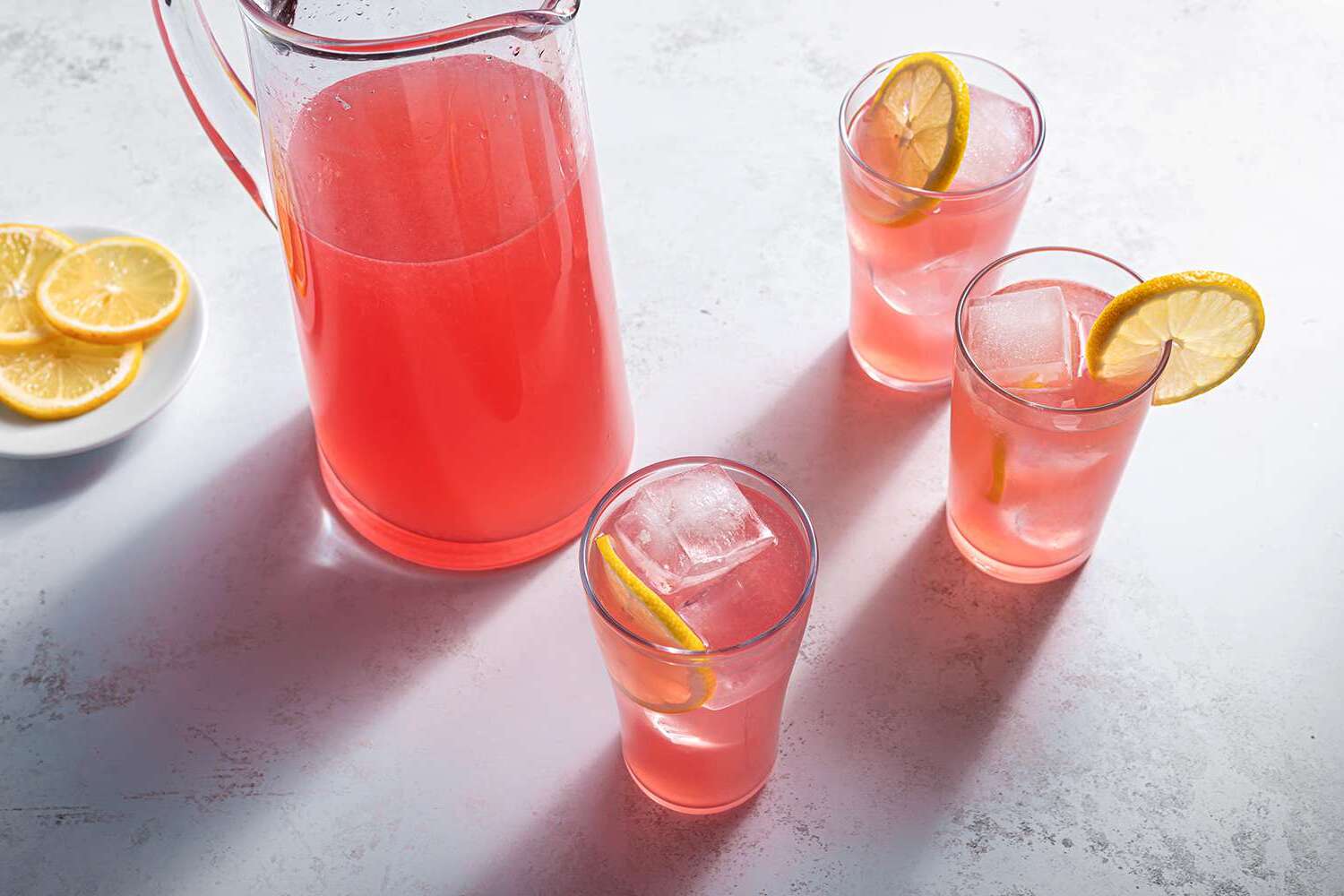
Pink lemonade, a beloved summer drink, has a history as colorful as its hue. Ever wondered how this rosy twist on traditional lemonade came to be? The origins of pink lemonade are shrouded in mystery, with multiple stories vying for the spotlight. Some tales trace its roots back to the circus, where quick-thinking concession workers supposedly created it by accident. Others suggest ancient Native American influences or clever marketing strategies. From Henry E. Allott's cinnamon candy mishap to Pete Conklin's resourceful use of pink tights water, each story adds a layer of intrigue. Let's dive into the fascinating history behind this iconic beverage.
Key Takeaways:
- Pink lemonade has a colorful history, with origins linked to the circus and creative thinking. Its vibrant color and refreshing taste have made it a beloved summer icon for over a century.
- The circus played a significant role in the creation of pink lemonade, with stories of accidental discoveries and marketing strategies. Its enduring popularity and cultural significance make it a fascinating part of American food history.
The Colorful History of Pink Lemonade
Pink lemonade is a sweet, tangy drink that has captivated people for over a century. Its vibrant color and refreshing taste make it a summer favorite. But where did this iconic beverage come from? Let's explore the fascinating origins of pink lemonade.
Circus Roots and Early Stories
The circus played a significant role in the creation of pink lemonade. The stories from this era are filled with quick thinking and improvisation, reflecting the unique environment of the circus.
-
Henry E. Allott, a Chicago native, accidentally dropped red-colored cinnamon candies into a vat of traditional lemonade while working at a circus concession stand. The resulting pink mixture sold surprisingly well.
-
Pete Conklin, another circus concessions man, reportedly developed pink lemonade in 1857. He used water that had been used to rinse a performer's pink tights, rebranding it as "strawberry lemonade."
-
The dirty water theory, as described by Pete Conklin, involves using water that had been used to rinse a performer's pink tights. This water was then mixed with lemon juice and sugar to create a pink-hued drink.
-
The cinnamon candy theory suggests that red-colored cinnamon candies accidentally fell into a vat of lemonade, resulting in the drink's distinctive pink color.
Ancient Influences and Marketing
Some theories propose that pink lemonade was inspired by ancient Native American drinks, while others suggest that its vibrant color was a marketing strategy.
-
Some theories propose that pink lemonade was inspired by an ancient Native American drink made with the berries of a specific variety of sumac.
-
The vibrant color of pink lemonade, which appeals to small children, might be the primary reason for its enduring popularity.
-
The introduction of red dye #40 in commercial pink lemonade brands further supports the marketing theory.
Historical Context and Early Recipes
Pink lemonade emerged during a time when traveling circuses were at their peak. Early recipes reflect the use of natural ingredients to achieve the pink hue.
-
Pink lemonade emerged during a time when traveling circuses were at the height of their popularity in the early 19th century.
-
One of the earliest known recipes for pink lemonade appears in E.E. Kellogg's Science in the Kitchen from 1892, calling for strawberry, red raspberry, currant, or cranberry juice.
Modern Production and Psychological Impact
Today, pink lemonade is produced using various methods, and its color has a significant psychological impact on consumers.
-
Most commercial pink lemonade brands rely on concentrated grape juice or extract to achieve the distinctive color.
-
Environmental psychologist Sally Augustin suggests that the color of pink lemonade plays a significant role in its appeal.
-
Pink lemonade can be made using various natural ingredients such as cherries, strawberries, rhubarb, pomegranate, watermelon, and raspberries.
Variations and Cultural Significance
Pink lemonade has become a cultural icon, symbolizing summertime and outdoor gatherings. Its variations and historical accounts add to its charm.
-
The pink-fleshed Eureka lemon, discovered in the 1930s, does not produce juice with a color distinguishable from regular lemon juice.
-
Some early recipes for pink lemonade used toxic dyes such as red vermillion or red lead, which were highly toxic and now banned from food use.
-
Today's pink lemonade production involves safer and more modern methods, using nontoxic red dye #40.
-
The stories of Henry E. Allott and Pete Conklin reflect the entrepreneurial spirit of circus concessions men.
-
Pink lemonade has become a cultural icon, symbolizing summertime and outdoor gatherings.
-
Different historical accounts provide varying details about the origins of pink lemonade.
-
The color of pink lemonade has played a significant role in its marketing.
-
Several historical documents provide evidence for the origins of pink lemonade.
Circus Culture and Innovation
The circus provided a unique cultural context for innovation, leading to the creation of pink lemonade and other new products.
-
The circus provided a unique cultural context for innovation, leading to the creation of new products like pink lemonade.
-
Pink lemonade has had a lasting impact on the beverage industry, inspiring the creation of various flavored drinks.
-
Modern recipes for pink lemonade can include ingredients like watermelon, strawberry, raspberry, and grenadine.
-
The psychological effects of color, as discussed by Sally Augustin, highlight the importance of visual appeal in consumer preferences.
-
Historical accuracy suggests that the Conklin brothers' tale has a chronological edge over other stories.
-
Early producers of pink lemonade employed marketing strategies like rebranding the drink as "strawberry lemonade."
-
The use of toxic dyes in early recipes for pink lemonade raises concerns about food safety.
-
Pink lemonade has left a lasting cultural legacy, symbolizing summertime and outdoor gatherings.
-
Different production methods have been used to achieve the distinctive pink color of pink lemonade.
-
The psychological impact of pink lemonade on consumers is multifaceted.
-
Several historical documents provide evidence for the origins of pink lemonade.
-
Pink lemonade has had a significant impact on food culture, influencing the creation of new flavors and drinks.
-
Modern production techniques involve safer and more efficient methods for achieving the distinctive pink color of pink lemonade.
-
The exact origin of pink lemonade remains unclear, but the most plausible accounts involve the circus and the resourcefulness of its concessions men.
-
Whether it was due to accidental discovery or quick thinking, pink lemonade has become an integral part of American culture, symbolizing summertime and outdoor gatherings.
The Colorful Tale of Pink Lemonade
Pink lemonade's origins are as vibrant as its color. From circus roots to accidental discoveries, several stories compete to explain how this beloved drink came to be. Henry E. Allott's tale of cinnamon candies and Pete Conklin's quick thinking with dirty water both highlight the resourcefulness of circus life. Some theories even suggest ancient Native American influences or clever marketing strategies.
Despite the mystery, one thing's clear: pink lemonade has become a cultural icon. Its bright hue and refreshing taste make it a summertime favorite. Whether made with strawberries, raspberries, or modern dyes, the drink continues to captivate. Historical recipes and modern production methods show its evolution, but its charm remains unchanged.
Pink lemonade's story reminds us of the power of innovation and quick thinking. It's a testament to how a simple twist on a classic can create something truly iconic.
Frequently Asked Questions
Was this page helpful?
Our commitment to delivering trustworthy and engaging content is at the heart of what we do. Each fact on our site is contributed by real users like you, bringing a wealth of diverse insights and information. To ensure the highest standards of accuracy and reliability, our dedicated editors meticulously review each submission. This process guarantees that the facts we share are not only fascinating but also credible. Trust in our commitment to quality and authenticity as you explore and learn with us.


